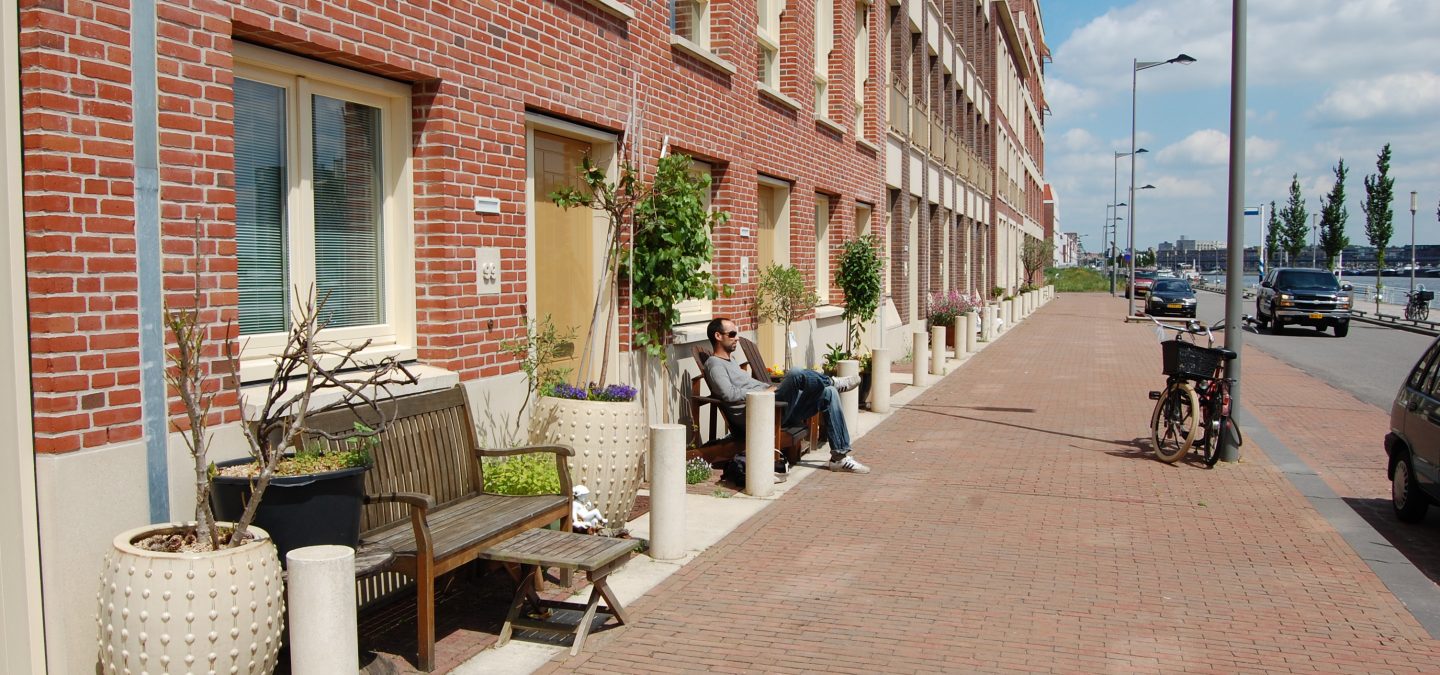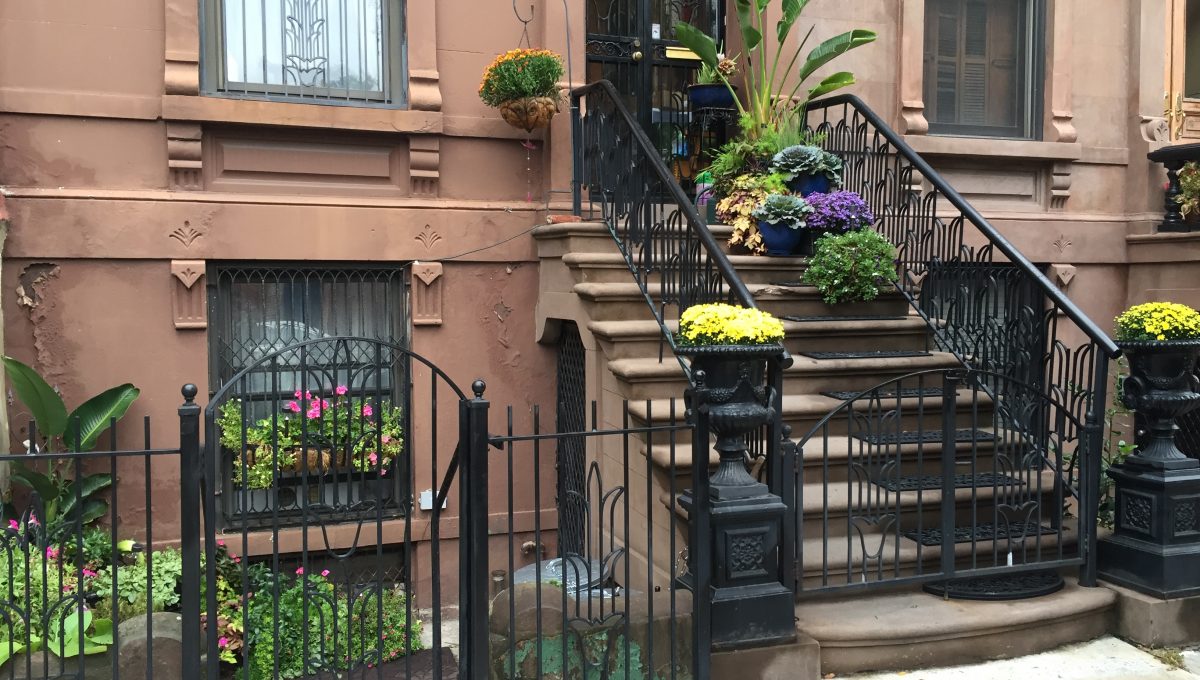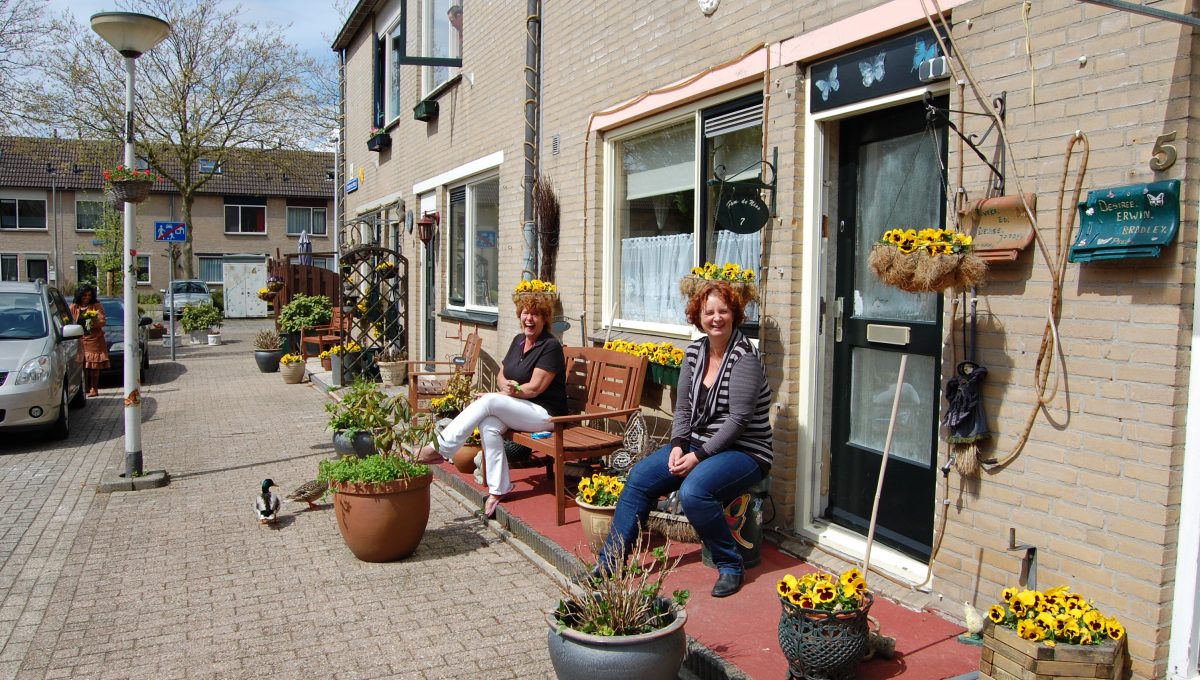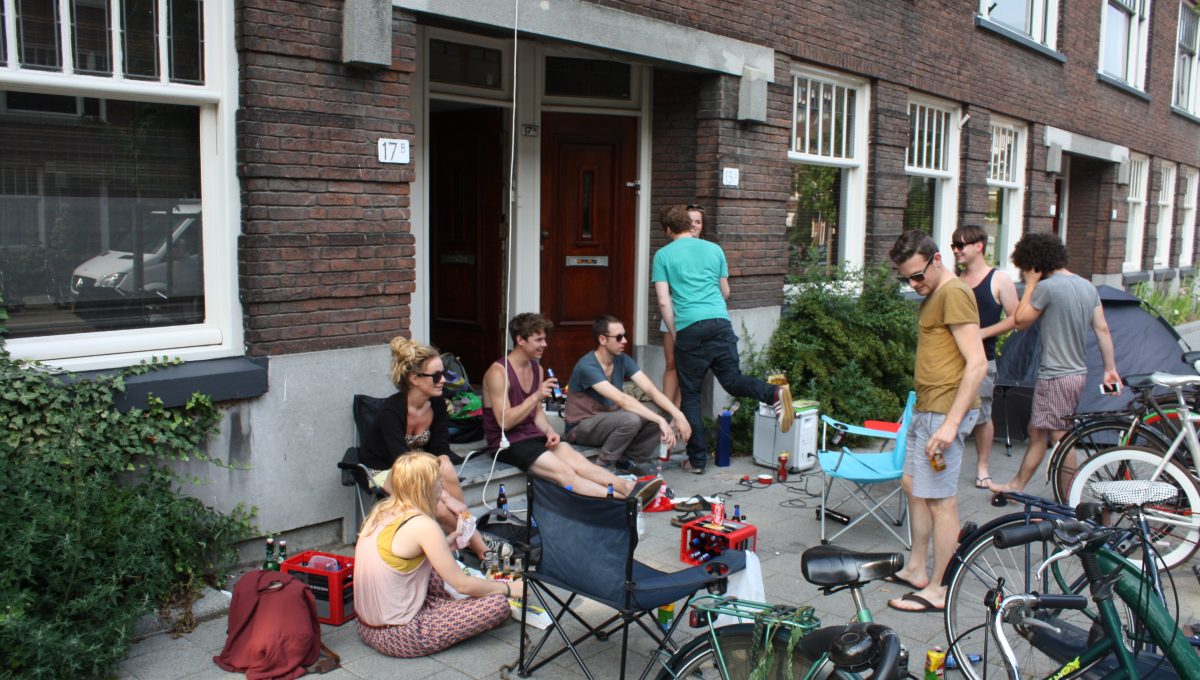
Keep up with our latest news and projects!

Urban planner Eric van Ulden and urban psychologist Sander van der Ham are advocating the rehabilitation of the sidewalk as it was originally intended: as a buffer zone between public and private space. And please, let’s just call it a sidewalk again. ‘When you talk about hybrid or transition zones, no one really knows what you’re talking about, even though we always had such a nice word for it.’
‘A search for #stoep (which means sidewalk in Dutch, from which the English word stoop, a small porch, is derived) on Instagram mainly yielded hits with pictures of paving stones and dog turds,’ says urban planner Eric van Ulden. ‘But there was also a photo of US correspondent Erik Mouthaan who had used the hashtag #stoop in addition to #stoep. The former generated all kinds of beautiful pictures of the sidewalk as it had originally been in the Netherlands: a space of about 1.25 metres in front of the front door that belonged to the house. These ‘stoops’ also common in America, in the shape of a veranda or stairs leading to the front door. We now refer to sidewalks as transition zones, hybrid zones or as space in between. But actually no one has clue what you’re talking about, even though we have such a nice word for it. Our mission is to bring back the sidewalk, as well as the meaning of the word, in its original defnition.’
 © STIPO
© STIPO
 © Daniel Heussen
© Daniel Heussen
‘But with a modern twist,’ adds urban psychologist Sander van der Ham, ‘so that the sidewalk in today’s society can contribute to life on the street and to the communities in the neighbourhoods.’
In the Netherlands, the sidewalk goes back more than 500 years and was a buffer zone between houses and the carriages and the busy life on the street. Ironically, it vanished in the eighteenth century precisely because the cities became so much busier. The Dutch sidewalk made way for the French trottoir: a traffc-related space with an edge on the sidewalk that people could walk back and forth on. In 2011, Eric van Ulden and Daniel Heussen decided to research the function of the sidewalk. Because they defnitely wanted to examine the social function of the sidewalk as well, they asked urban psychologist Sander van der Ham to join them. The research resulted in the publication of the book De stoep. Ontmoetingen tussen huis en straat (‘The sidewalk: Encounters between house and street) in 2015.
‘Apparently it’s not possible to develop urban space in such a way that it’s natural to meet each other,’ Van der Ham says. ‘It almost seems as if we need community centres or other organisations to get people to meet. And yet the sidewalk, a small space in front of your front door, can be a place where you casually meet the people that live around you.’
The Dutch research on sidewalks has confrmed the fndings of Norwegian-Swedish research, which has shown that more than 80% of casual contact between neighbours takes place in transition zones. ‘The people that use these transition zones have signifcantly more contact with their neighbours,’ Van der Ham says. ‘Not only do they chat more often in front of their door, but they also get together more often. Moreover, they’re better at gauging their neighbours’ lifestyle. Even leaning your bike on the façade helps. The fact that you spend a few moments there a couple of times a day has an enormous social function. So
when you talk about the individualisation of society and about polarisation, the sidewalk could easily act as an important counterbalance to that. People strike up a conversation and talk about the weather, the street and whether it’s a pleasant place to live. It’s precisely these talks that make sure people get to know on another. The casual conversation as an antidote to individualisation in society.’
The research also revealed that as soon as something is placed on the sidewalk, it draws the gaze of passersby and causes them to look less inside, as a result of which residents feel freer. ‘During our research we visited people in Blijdorp in Rotterdam that had nothing in front of their house,’ Van Ulden says, ‘so that passersby walked very close to the window. As it turns out, the residents weren’t making any use of the space bordering the street. Their house had become like a museum, a “looking house”. I actually think that it’s wrong to make people’s houses border directly onto the public domain. Just as we reserve a certain amount of space for parking when we design, we should do the same for the sidewalk when possible.’
 © Eric van Ulden
© Eric van Ulden
‘Not only does that make a street like that more pleasant, but it’s more pleasant for passersby too,’ Van der Ham says. ‘Anyone walking into a street with small front gardens and pots and plants feels safer because it’s visibly a place that people care about.’
Luckily there are places where sidewalks are doing well. Such as IJburg in Amsterdam, where one of these Dutch sidewalks is part of the urban development plan. All architects and urban planners are now obliged to incorporate that space in their designs, and that has turned out well. And sidewalks are making a comeback outside the Randstand conurbation too. The centre of Groningen is deliberately returning the transition spaces to residents.
There are few places where the difference between having a sidewalk or not is as clear as on Katendrecht in Rotterdam, where part of the apartment complexes on the quay has a small zone in front of the façade, whereas the other part does not. ‘There’s absolutely nothing going in the areas without that zone on the sidewalk,’ Van der Ham says. ‘People there keep their curtains closed and the public amenities there are turned inward. The people living in the area with small zone – simply a kind of strip placed in the sidewalk – have started using that space. And that has grown, in about three years’ time, into a wealth of green.’
The plants also enhance the resilience of the city and its ability to adapt to climate change. ‘Whereas we were initially interested in the social function,’ Van Ulden says, ‘now other developments are coinciding with the return of the sidewalk in front of the door. These transitions zones – sometimes just a little garden the size of a paving stone in front of the façade – provide space to insects such as bees. Because plants evaporate water and provide shade, they cool down the city, which is much warmer than the land surrounding it. The gardens also reduce the chance of fooding as they prevent all of the rainwater from going into the sewers.’
Interested? Join The City At Eye Level and share your story!
Discover more‘The sidewalk turns out to be an important space in many parts of the city,’ adds Van der Ham. ‘Moreover, it’s something that people really want. As a result, it spreads over the city like a web, initiated by the inhabitants themselves. That’s really powerful.’